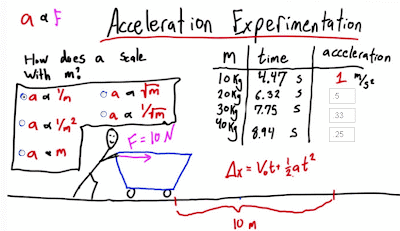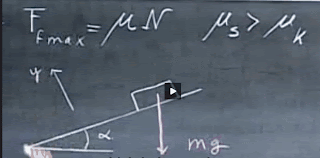anas
Here is what you posted:" Hello everybody. While I was trying to solve this problem,I found a contradiction,and that confuses me because all the equations that I used are right.well,let me clarify: First of all,I calculated the Force of the air = bV^2=410^-5 Then I calculated the weight of the feather,AKA Fmg=mg=0,01 After that,until I know the final force applied on it,I calculated the difference: P-F air=9,9610^-3 Okay,then,until I get the acceleration value,I used the Newton equation : F=ma to figure it out,I of course used the final force (9,9610^-3),but and here's the surprise,I find the value of acceleration :9,96 m/s^2,and that just blows my mind up ! It's a too high value and,as described earlier in the course,the feather fall very slowly (almost at a constant speed). Could you please clarify this for me,show me if there's a mistake in my measurement. P.S:I couldn't find the speed using only the acceleration that I've calculated,I tried to use the system that was given as a solution in the unit,but in vain,there's a lot of unknown variables. Thank you."
Now I am trying to figure out what you did and I have some questions:
| What you wrote | A question | Comments |
|---|
| Force of the air = bV^2=410^-5 | We don't know V or V^2. I don't understand where you got 410^-5. | We know only:
- Weight of feather = .001 kg
- Feather resistance equation of bV^2
- b = .04
|
| Then I calculated the weight of the feather,AKA Fmg=mg=0,01 | The weight of the feather is a given. It is .001 kg | No calculation is necessary |
| P-F air=9,9610^-3 | I don't know what this is a calculation of or how you did the calculation | |
| I find the value of acceleration :9,96 m/s^2 | The acceleration down is gravity at 10 m/s/s. What was it that surprised you? | |
| Could you please clarify this for me,show me if there's a mistake in my measurement. | For me to do this, I need to see your calculations. | I need more data from you. |
| I couldn't find the speed using only the acceleration that I've calculated | The problem is to express the forces up and down; set them equal; and solve for V. | This is what I did in my posted answer. |
| There's a lot of unknown variables | | You have over achieved and been stumped. Your approach did not work out for you. Time to try another. |






































